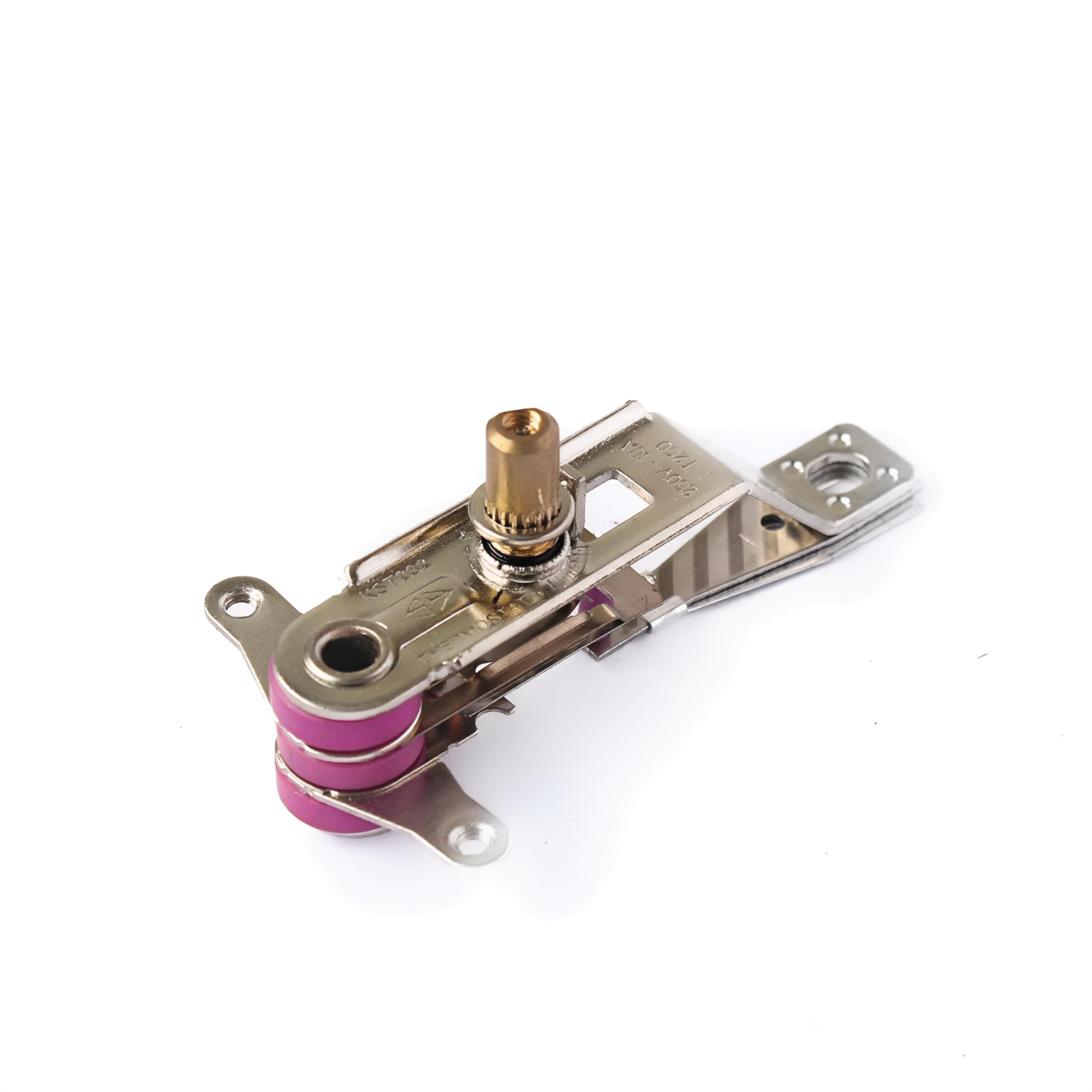Steam iron thermostat :


Temperature Sensing: The thermostat contains a temperature sensor, typically a bimetallic strip or a thermistor, which senses the temperature at the bottom of the iron.
Temperature Comparison: When the iron reaches the set temperature, the temperature sensor detects this.
Electrical Current Control: If the iron's temperature is below the set level, the thermostat allows the electrical current to flow through the heating element to continue heating. If the temperature reaches or exceeds the set level, the thermostat interrupts the current, stopping the heating element from working.
Temperature Maintenance: By periodically turning the heating element on and off, the thermostat can maintain the iron at a relatively stable temperature range.
User Setting: Users can set the desired ironing temperature through a dial or button on the thermostat, with different temperatures suitable for different types of fabric.
Safety Features: Some advanced iron thermostats also have an overheat protection feature that automatically cuts off the power if the iron is left unused and the temperature becomes too high, preventing fire or damage to the iron.
Temperature Indication: Certain thermostats also have a temperature indication feature, informing the user of the current temperature status of the iron through LED lights or a display.
The design of the iron thermostat ensures the safety and efficiency of the ironing process while also protecting garments from damage due to excessive heat.















